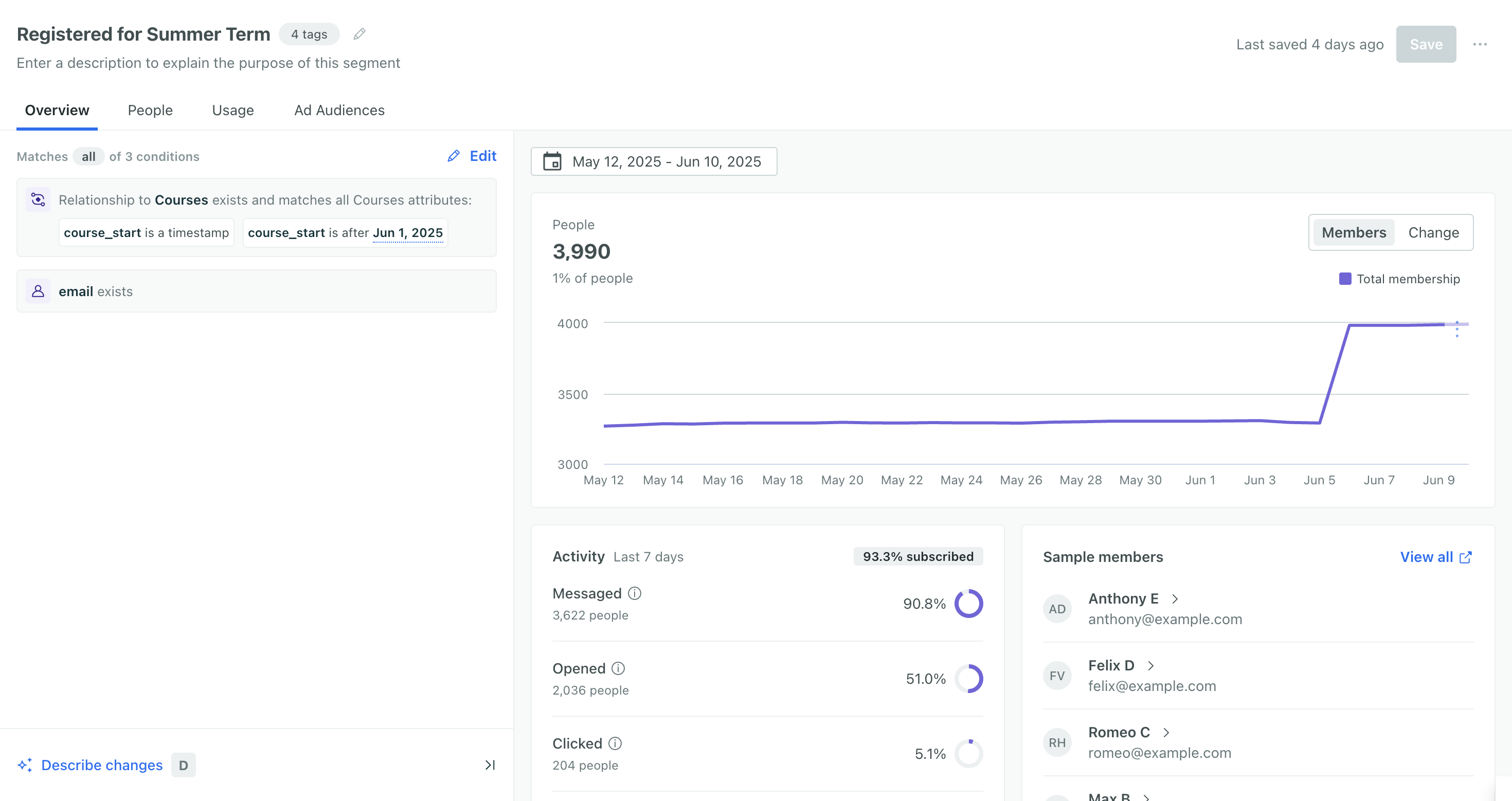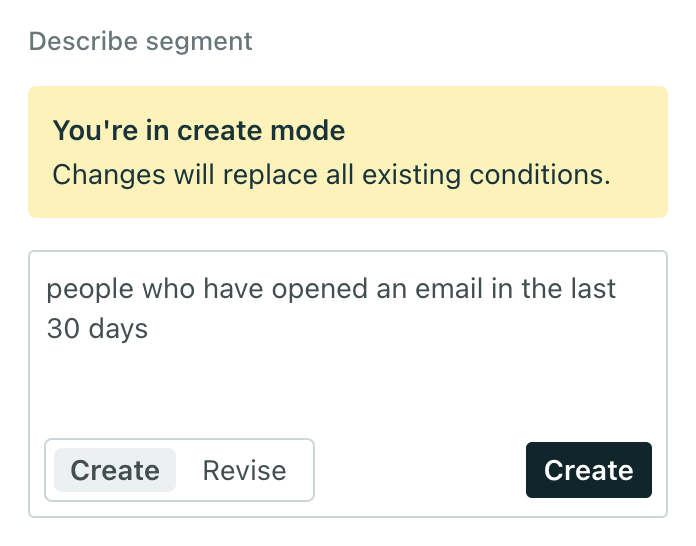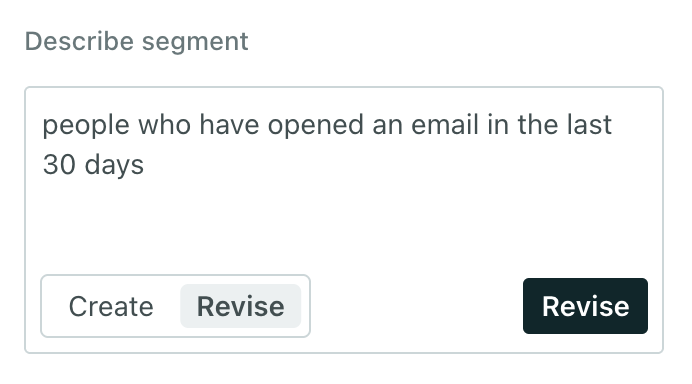Segment builder: generate segments with AI
UpdatedBuilding segment conditions to target the right audience can be hard, so we’ve made it possible for you to generate segments by leveraging AI!
How it works
The segmentA segment is a group of people in your workspace. Use segments to trigger campaigns, track membership over time, or fine-tune your audience. There are two types of segments: data-driven and manual. Data-driven segments automatically update when people start or stop matching criteria. Manual segments are static. builder leverages publicly available data about your company and data from your workspace to suggest conditions for targeting specific audiences. You can either provide a brief prompt to generate segments or choose from suggested conditions that align with your goals.


We prioritize your data privacy
Our AI-powered segment suggestions are based solely on attribute names from your workspace, such as profile and event attributes, but never the values. We do not use any personally identifiable information (PII) to suggest or generate segments.
For example, if you have a first_name attribute, we know the attribute exists but do not pass actual names through AI, a large language model (LLM), or any other service to help generate segments. Our system only processes attribute names so your audience’s personal information remains protected.
Suggested conditions improve as you populate your workspace
As your workspace grows and becomes more populated with data, the relevance of our AI-generated suggestions will increase. More data means suggestions will be more tailored and useful to your business.
You can also improve the conditions generated by AI by adding descriptions to your attributes and events in the Data Index. Our segment builder takes these descriptions into account to better understand your data and provide more relevant segment conditions.
Build a segment with AI
To use AI to build a segment, you must do so within the Segments section of your workspace. If you’re familiar with creating segments while setting up a campaign, note that AI-driven segment building is not available in that workflow.
- Go to Segments.
- Click Create Segment > Data-driven.
- Click Describe segment on the Overview tab.
- In the panel, generate segments by describing your use case or clicking suggested segments.
- (Option 1) Enter a brief prompt and then click Create to generate a segment.
- (Option 2) Hover over suggested segment names to learn more. Choose one if it’s relevant to your goals or click Refresh to generate new suggestions. Then click a suggestion to generate the segment.
Add descriptions and tags to your attributes and events in the Data Index to improve segment generation!
Providing additional context on your data helps our segment builder better understand your data and provide more relevant results.
- Review your conditions. Do they target attributes that are relevant to your goals? You can modify the conditions directly or revise the description.
- Review our insights—People and Activity, to confirm you’re grouping the people you expect.
- Enter a segment name, if you haven’t already.
- Click Save Segment.
Revise a description
Revise a segment description to hone in on your audience using AI. After you click Describe changes, you’ll see a text box where you can add your prompt. After you click Create the first time, you have the option to revise your existing description or create a new prompt from scratch.
To revise your description,
To create a new description,
- Click Create to switch out of revise mode.
- Enter a new description.
- Click Create.


- Check your new conditions.
Review our insights
As you build your segment, we generate insights to help you understand the people in your segment. This can help you determine if you need to refine your conditions further.


You’ll see two charts under People after you save your segment.
People
Under People, you’ll see the number of people who would join this segment once you create it and what percent of your workspace they represent. You can preview Sample members and click on them to see their data.
After you save your segment, you can preview total membership and membership changes over a period of time. By default, we show the past 30 days:
- The Members chart shows total membership.
- Click Change to switch to viewing membership changes—count of people who entered or left the segment over time.
Activity
The subscribed metric shows the percent of people in this segment currently subscribed to your messages. If you use our subscription center, it’ll show the percent of people subscribed to at least one topic.
Under Activity, you can review how people have engaged your messages in the past seven days and whether they’ve interacted with your product or marketing site.
How we determine activity
We determine whether people have viewed your product or marketing site based on page and screen events. If you link people to a website containing our JavaScript snippet, or a mobile app using one of our SDKs, we typically capture page and screen events automatically. Otherwise, you can send these events using a number of other integrations.


